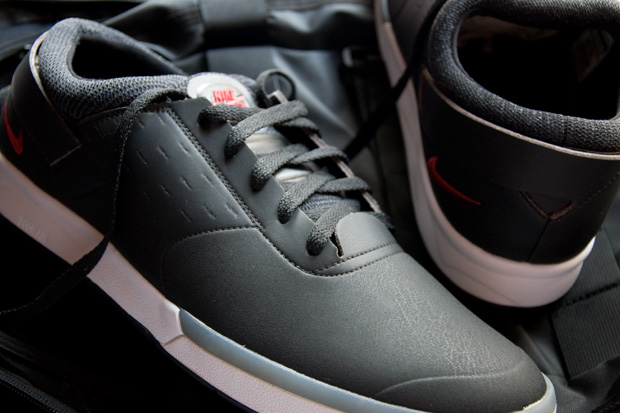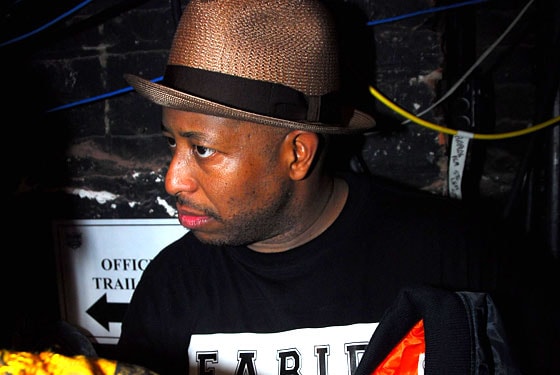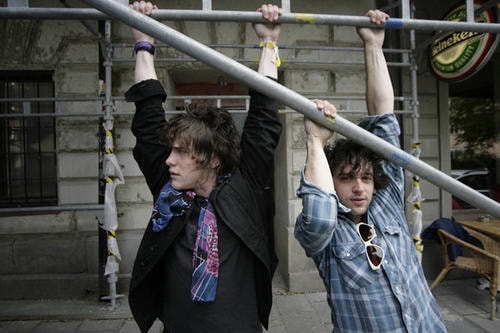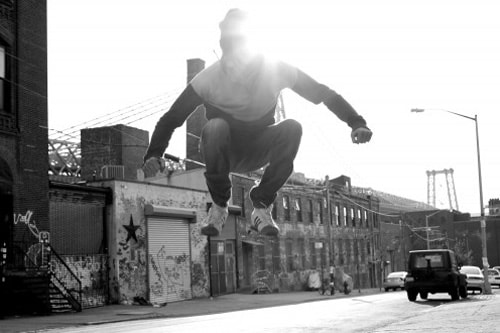Crooked Tongues: Nike SB Zoom FP Shawn Carboy Q&A
Deemed one of the best releases of 2010 by the people at Crooked Tongues, the Nike SB Zoom FP

Deemed one of the best releases of 2010 by the people at Crooked Tongues, the Nike SB Zoom FP undergoes a more comprehensive background analysis with Nike SB’s Shawn Carboy. The sneaker’s various new implementations and references to shoes such as the Presto and the Free are all discussed, as well as the anatomical differences of the FP versus the incoming Nike SB Dunk Pro. A selection of answers can be seen below, with the rest of the interview seen here.
What was the Zoom FP’s intended position in the SB line?
We wanted the Zoom FP to be a technical shoe, but at the same time be clean and wearable. Allowing the form to be functional, but keeping the shoe simple and to the point. The process starts and ends with a few basic principles: designing a shoe that you barely notice wearing, while still solving the problems of what makes a shoe skate better.
How long does a project like the FP take to develop? Did the original sketches look like the final article?
We knew there were going to be challenges, so we started a season early—about a year and a half out. The design stayed pretty true to the original design intentions. Since the tooling is an evolution of the Zoom TRE AD tooling, our effort was focused on the construction of the upper, which turned out to be challenging.
The shoe is split into two main parts, the endoskeleton and the exoskeleton. The endoskeleton (the booty) is the internal support structure, which creates the sock-like fit. The exoskeleton (the external shell) supports and protects the booty. The exoskeleton gives you the needed durability without losing board feel or flexibility. Making the shell takes different machines than normal footwear construction. Luckily for us, the Running group have been using this process of flat press (no sew) construction. So once we figured out how to make the shell, then we needed to work out how it would be stitched to the booty with the least amount of hot spots. We went through every stitching path to make sure paths began and ended with no irritation to a person’s foot.
I’m pretty psyched on how it turned out, especially when guys like Eric Koston, Ishod Wair, and Daryl Angel can give us the thumbs up after skating in it and shooting ads in the Zoom FP.
Is there a substantial challenge in making that upper as clean, panel and bulk-free as possible but still making it capable of taking the blows of regular skating?
It’s in the simplicity in the design that makes the FP what it is. We started by asking ourselves, “Does a shoe need to be bulky in order to be durable?”
Usually technical skate shoes are overbuilt and heavy. The thought behind technical skate shoes is to make them indestructible. The shoe then becomes a protection story: protection from the board, protection from impact, protection from the environment, and so on. And with building a shoe in this manor, you increase the amount of parts that could fail. You also take away the actual experience of skating. It’s hard to skate with bricks on your feet. Anyone who skated in the late 90’s can attest to that. It seemed like a good idea at the time!
The ultimate goal is to make the protective qualities work for you. By using the no sew/flat pressing process, we can do this. We can retain the protective qualities of a technical skate shoe, but still have board feel, cushioning, fit, durability, et cetera. For example, the FP doesn’t look durable, but if you dissected the forefoot, you would see that there’s three layers of protection. The top layer is a TPU film, the center is synthetic leather that’s the structure of the shoe, and TPU film underlay for that last layer of protection
How useful has Free technology been to the line? Even the Dunk seems to be getting a spot of Free early next year too.
The way I approached the Dunk Pro SB is different than the FP. With the FP, it makes sense to build in a Nike Free flex groove since there is phylon in the forefoot. This allows us to have a vulc-like board feel while retaining the cushioning properties.
In the case of the Dunk Pro SB, we didn’t need to incorporate a Free flex groove because you’re forefoot is sitting on rubber. We redesigned the tread so that it was specific for skateboarding. The original tread was built for a basketball court. When the shoe got dusty, it didn’t work so well on griptape. So by removing some of the rubber, we increased the overall traction while retaining the Dunk’s iconic look.
It’s a very 21st century thing that our first introduction to a shoe tends to be a camera shot or scan of a lookbook sideview. That’s how we first saw the FP and it didn’t do it justice at all. Is that a pain after you’ve put the work in?
Nah, I actually like seeing people write about what we design. It’s healthy to have a debate whether a shoe sucks or not. Nobody should have people agree with them all the time. That’s the great thing about skateboarding, we’re all different and we love to talk trash. If there’s constructive criticism, then I’m game to hear anyone out. I knew this was going to be challenging since the FP is a departure from its predecessors and I knew there was going to be criticism.
There’s a spot of Huarache in there and plenty of Presto to the minimal look and minimum of pieces— was that an inspiration? It reminds us of the old Dunkesto model in some ways.
We used the Presto as a starting point. The Presto is great for its simplicity, a no-nonsense “less is more” approach. This thinking allows us to stay hyper focused on design intent, which is to strip away anything that’s unnecessary while keeping only what you need.












